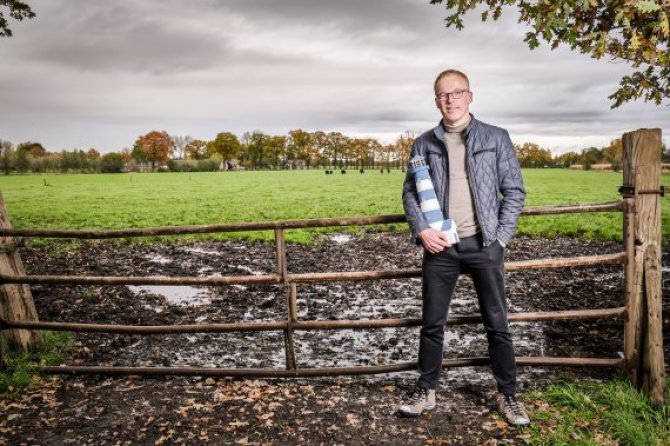
Interview
The residents of Radix Nova, part 4: Rogier Schulte and Lizzy Freed
Directly behind Radix is a new building, Radix Nova, into which four chair groups have quietly moved during the pandemic. As part of a series of articles meeting the new occupants, we talk to chairholder Rogier Schulte and project manager Lizzy Freed from the Farming Systems Ecology group. “A hospital corridor feel was our greatest concern.”
"The hybrid approach is ideal for us"
It’s fair to say that Rogier Schulte and his colleagues were less than delighted when their chair group was first nominated to move to Radix Nova. “We were not totally against the idea as we realised space had to be created in Radix and that groups without laboratories were the easiest to move. Our greatest concern was that we would end up in a building that felt like a hospital corridor, surrounded by rooms with closed doors.”
Complete retrofit
Good conversations with the other intended occupants of Radix Nova followed and the result was a complete retrofit of the department. The large open workspace, for example, now the epicentre of the department, is best compared to a Starbucks. There’s a meeting room fully equipped for hybrid meetings with people the world over, while the lounge area is predominantly suited to team meetings. Colleagues who wish to fully focus on their work can use clean desks in the team rooms.
“We thought about how best to set up the department so that everyone’s needs were met as a group,” Lizzy explains. “Taking myself as an example, I work partly in the Netherlands and partly in the US from where I’m originally from. When here I like to work in the office as much as possible while some Dutch colleagues prefer working from home and only coming to Radix Nova for meetings once a week.”

International work sphere
Farming Systems Ecology is a pioneer on campus and, as an official pilot department, has the space to experiment with a new working concept. This seamlessly matches the international focus of a group that is specialised in the radical redesign of farming and food systems worldwide. The group designs future farming systems and then works its way backwards: what do we have to do now to get there by 2030? Models are developed for all scale levels, from field and farm to the Circular Food System Model of Hannah van Zanten and her team. The latter model was awarded with a prestigious research prize in the US in 2022 and shows how vegetable and animal proteins can be combined in a nutritious diet that fits into the production capacity of our planet.
Lighthouse farms
The models are based on current examples of farms worldwide which have already reinvented themselves. “We call them lighthouse farms for the way they illuminate the path to the future,” says Rogier. “From a circular, almost industrial agri-park in Latvia and a small-scale farm in Indonesia to a farm for organic strip tilling in the Dutch Flevopolder, these farms are all part of a global network.”
It’s also a network which is attracting increasing interest and funding, adds Lizzy. “We’re working on new lighthouse farms in Europe within four EU projects. And together with Deloitte we are a partner in the World Economic Forum’s 100 Million Farmers initiative, a platform that helps farmers make the transition to future-proof agriculture. It’s a huge project in which we are working closely with other groups from WUR to bring all the available Wageningen knowledge resources together.”
Jury membership via Zoom
The new hybrid approach to work is ideal for the group, says Lizzy: “It’s in line with how we like to work. We are building regional hubs in various parts of the world that enable us to meet with partners in the same time zone more often. These hubs meet the essential need to stay in touch while the online environment connects us to people around the world in an instant.”
Rogier recently served via Zoom as a jury member for a local farm competition on an Indonesian rice paddy, for example. “Thanks to the bandwidths we now have there was no delay in the connection whatsoever. Without COVID-19 I wouldn’t have been able to attend in this way. And imagine what not having to travel as often will mean for our CO2 footprint and agendas!”
The initial scepticism about Radix Nova has soon been replaced by contentment. While Lizzy and Rogier are very pleased with the retrofit of their department, there is still one thing they’re missing: “We need proper access to the main Radix building as we have to go through the postal room unless we take the long way around.”
Radix Nova also remains unsuitable for receiving guests, not least due to the lack of a large meeting room. “We’ve learned to work around it for now and meet in Impulse or elsewhere,” concludes Lizzy. “Otherwise we’re quite happy with our Starbucks-like working environment.”